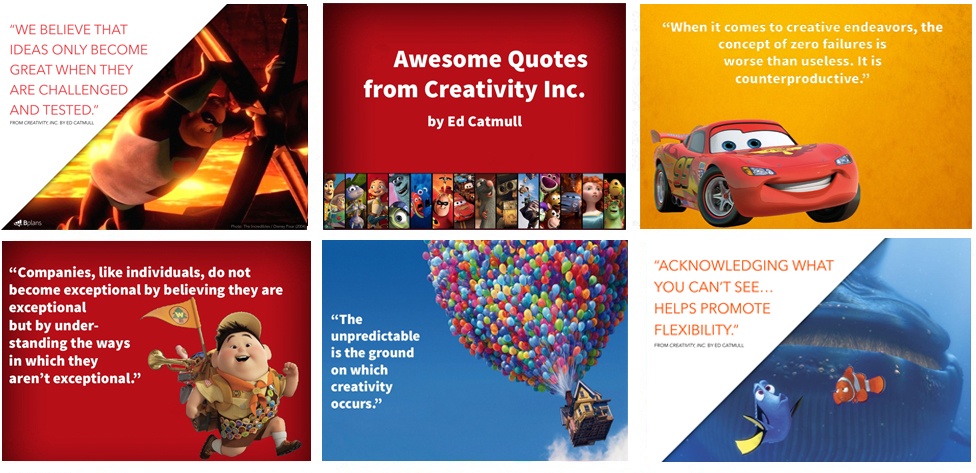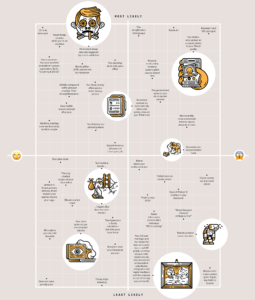
Creativity, Inc. | Overcoming the Unseen Forces that Stand in the Way of True Inspiration
Creativity, Inc.
Author: Ed Catmull, President of Pixar Animation & Disney Animation with Amy Wallace
Creativity, Inc. is a book for managers who want to lead their employees to new heights, a manual for anyone who strives for originality, and the first-ever, all-access trip into the nerve center of Pixar Animation—into the meetings, postmortems, and “Braintrust” sessions where some of the most successful films in history are made. It is, at heart, a book about how to build a creative culture—but it is also, as Pixar co-founder and president Ed Catmull writes, “an expression of the ideas that I believe make the best in us possible.”
On the importance of getting the team right:
If you give a good idea to a mediocre team, they will screw it up. If you give a mediocre idea to a brilliant team, they will either fix it or throw it away and come up with something better. The takeaway here is worth repeating: Getting the team right is the necessary precursor to getting the ideas right.
Corollary: A good team is made up of people who complement each other.
On criticism:
There’s a difference between criticism and constructive criticism. With the latter, you’re constructing at the same time that you’re criticizing. You’re building as you’re breaking down, making new pieces to work out of the stuff that you’ve just ripped apart. That’s an art form in itself. I always feel like whatever notes (feedback) you’re giving should inspire the recipient – like, ‘How do I get that kid to want to redo his homework?’ So, you’ve got to act like a teacher.
Corollary: The Braintrust is fueled by the idea that every note we give is in the service of a common goal: supporting and helping each other as we try to make better movies.
On making mistakes:
Mistakes aren’t a necessary evil. They aren’t evil at all. They are an inevitable consequence of doing something new (and, as such, should be seen as valuable; without them, we’d have no originality).
Corollary: If you aren’t experiencing failure, then you are making a far worse mistake: You are being driven by the desire to avoid it.
Corollary: The more time you spend mapping out an approach, the more likely you are to get attached to it.
On the famous principle in physics known as Occam’s Razor:
On the most basic level, it says that if there are competing explanations for why something occurs the way it does, you should pick the one that relies on the fewest assumptions and is thus the simplest.
On navigating between the known and the unknown:
The most creative people are willing to work in the shadow of uncertainty.
Corollary: The goal is to place one foot on either side of the door – one grounded in what we know, what we are confident about, our areas of expertise, the people and processes we can count on – and the other in the unknown, where things are murky, unseen, or uncreated.
Bonus Material:
http://www.creativityincbook.com/7-core-principles/
 SAGE Serendipity: Wired.com has posted a creepy but funny tech “Anxiety Matrix” chart. From Most Likely (You mistakenly upload an accurate photo to your Tinder profile) to Least Likely (Trump stops tweeting) It’s worth the chuckle…enjoy!
SAGE Serendipity: Wired.com has posted a creepy but funny tech “Anxiety Matrix” chart. From Most Likely (You mistakenly upload an accurate photo to your Tinder profile) to Least Likely (Trump stops tweeting) It’s worth the chuckle…enjoy!
 Secure Document Sharing
Secure Document Sharing



